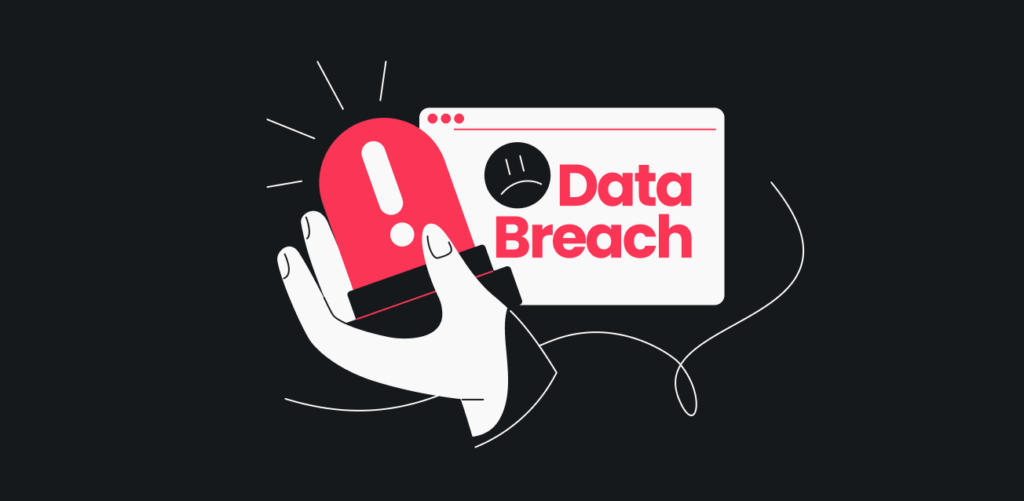Why Do Data Breaches Happen So Frequently?

Why Do Data Breaches Happen So Frequently?
In today’s digital age, data breaches have become alarmingly common. They strike fear into the hearts of consumers and businesses alike, leaving a trail of compromised information in their wake. With headlines blaring about the latest high-profile hacks, it’s hard not to feel vulnerable. The reality is that these incidents can lead to devastating consequences—financial losses, reputational damage, and a loss of trust between organizations and their customers. Understanding why data breaches happen so frequently is crucial for everyone navigating this increasingly interconnected world. Let’s dive deeper into the factors that contribute to these security failures and explore how we can better protect ourselves from them.
Common causes of data breaches
Data breaches often stem from a mix of technical flaws and human missteps. One common cause is outdated software. When organizations neglect to update their systems, they leave themselves vulnerable to exploitations.
Weak passwords are another frequent issue. Many users still rely on simple or reused passwords, making it easy for attackers to gain unauthorized access.
Phishing attacks also play a significant role in data breaches. Cybercriminals use deceptive emails and messages to trick individuals into revealing sensitive information. This tactic preys on trust and can bypass even the most advanced security measures.
Additionally, unsecured networks can contribute significantly to data exposure. Public Wi-Fi connections often lack encryption, enabling hackers to intercept data traffic with ease.
Each of these factors illustrates how lapses in both technology and user behavior can lead directly to devastating breaches that compromise personal and organizational data.
Cybersecurity threats and vulnerabilities
Cybersecurity threats are evolving at an alarming rate. Cybercriminals leverage sophisticated tactics to exploit vulnerabilities in various systems. From phishing schemes to ransomware attacks, the landscape is perilous for organizations of all sizes.
Software vulnerabilities play a crucial role in these breaches. Outdated applications and unpatched systems provide easy access points for attackers. A single weakness can lead to catastrophic data loss.
Network security gaps also contribute significantly to risk exposure. Often, inadequate configurations or lack of monitoring allow intruders to infiltrate networks undetected.
Cloud services are not immune either. Misconfigured settings can expose sensitive data stored off-premises, making it a prime target for cyberthieves.
Staying ahead requires continuous vigilance against emerging threats and robust strategies that adapt to new challenges as they arise.
Human error and negligence as a leading cause
Human error remains a significant contributor to data breaches. Mistakes happen, but in the realm of cybersecurity, they can have dire consequences. An employee might accidentally send sensitive information to the wrong recipient or fall for a phishing scam.
Negligence also plays a key role. Many individuals underestimate the importance of strong passwords or fail to update software regularly. These seemingly small oversights can create vulnerabilities that cybercriminals exploit.
Additionally, inadequate training exacerbates the issue. Employees who are not well-versed in security protocols may unknowingly put their organization at risk. Regular training sessions could help mitigate these risks and promote awareness.
The human factor is often unpredictable yet critical in maintaining robust security measures. Organizations must recognize this vulnerability and take proactive steps to minimize its impact on their overall cybersecurity strategy.
Insider threats and malicious attacks
Insider threats are a growing concern for organizations worldwide. These threats come from individuals within the company, such as employees or contractors, who misuse their access to sensitive information.
Malicious attacks can be intentional and often stem from disgruntled workers or those seeking personal gain. They exploit their knowledge of internal systems to carry out harmful activities.
Unlike external cybercriminals, insiders understand the organization’s vulnerabilities better. This familiarity makes it easier for them to bypass security measures undetected.
Such actions can lead to severe data breaches that compromise customer trust and financial stability. Organizations must recognize this risk and implement robust monitoring practices.
Employee training is crucial in mitigating insider threats. When staff members are aware of the potential consequences of malicious behavior, they are more likely to act responsibly with sensitive data.
The role of technology in protecting against data breaches
Technology plays a crucial role in safeguarding sensitive data against breaches. Advanced security software, such as firewalls and intrusion detection systems, creates barriers that prevent unauthorized access. These tools act like sentinels, constantly monitoring network traffic for suspicious activity.
Encryption is another vital technology. It scrambles data into unreadable formats, ensuring that even if cybercriminals intercept information, they cannot exploit it. This adds an essential layer of protection for businesses and consumers alike.
Regular updates to software and operating systems are also important. They patch vulnerabilities that hackers could potentially exploit. Automated systems can help maintain this by promptly applying necessary fixes without human intervention.
Moreover, artificial intelligence (AI) enhances threat detection capabilities by analyzing patterns in real-time data flow. AI can identify anomalies faster than traditional methods, allowing organizations to respond swiftly before damage occurs.
Incorporating these technologies not only fortifies defenses but fosters a culture of proactive security awareness within organizations.
Steps organizations can take to prevent data breaches
Organizations can implement several proactive measures to minimize the risk of data breaches. First, conducting regular employee training is essential. It ensures everyone understands cybersecurity best practices and recognizes potential threats.
Next, adopting a strong password policy is crucial. Encourage complex passwords that are updated regularly. Implementing multi-factor authentication adds another layer of security.
Regular software updates and patch management are also vital in closing vulnerabilities before they can be exploited by attackers. Security technologies like firewalls and intrusion detection systems should be part of an organization’s infrastructure.
Additionally, organizations must control access to sensitive information through role-based permissions. This limits exposure and reduces the chances of unauthorized access.
Developing an incident response plan prepares teams for quick action if a breach occurs. These steps collectively build a robust defense against potential threats lurking in the digital landscape.
The importance of regular security audits and updates
Regular security audits are crucial for identifying vulnerabilities within an organization’s system. These assessments help pinpoint weak spots before they can be exploited by cybercriminals.
Updates play a vital role in maintaining robust cybersecurity. Software developers frequently release patches to fix known issues that hackers might target. Keeping systems updated is a straightforward yet effective way to bolster defenses.
Moreover, audits encourage accountability within teams. They foster a culture of security awareness and ensure everyone understands their role in protecting sensitive data.
By routinely evaluating security measures, organizations can adapt to evolving threats. This proactive approach minimizes risks and enhances overall resilience against potential breaches.
Staying informed about the latest cybersecurity trends is equally important. An adaptive strategy keeps businesses one step ahead of attackers seeking new ways to infiltrate systems.
Effects of a data breach on businesses and consumers
Data breaches leave a lasting impact on both businesses and consumers. For companies, the immediate aftermath includes financial losses from response efforts and potential legal fees. The trust that customers place in their brand can erode quickly after such an incident.
Consumers face risks too. Personal information may be exposed, leading to identity theft or fraud. This violation of privacy can result in emotional distress as individuals grapple with the implications of having their data compromised.
Moreover, businesses often experience reputational damage post-breach. A tarnished image can drive customers away and deter new clients from engaging with them. Many people are reluctant to share sensitive information with brands that have previously suffered a breach.
Long-term consequences include increased scrutiny from regulators and heightened security requirements moving forward, further straining resources for organizations already feeling the pressure from a data breach fallout.
Conclusion: the need for constant vigilance in
Data breaches are an ever-present threat in today’s digital landscape. The frequency of these incidents underscores the importance of remaining alert and proactive. Organizations must understand that their data is a prime target for cybercriminals, making it essential to prioritize cybersecurity measures.
Constant vigilance involves more than just implementing security protocols; it requires ongoing education and awareness at every level within the organization. Employees should be trained to recognize potential threats, fostering a culture where everyone plays a role in safeguarding sensitive information.
Regularly updating security systems and conducting thorough audits can help identify vulnerabilities before they become critical issues. Companies need to stay informed about emerging threats and adapt their strategies accordingly.
As technology continues to evolve, so do the tactics employed by malicious actors. Therefore, businesses must not only invest in advanced security solutions but also cultivate an environment of continuous improvement regarding data protection practices.
By adopting this mindset, organizations will be better equipped to prevent data breaches and protect both their interests and those of their customers from devastating impacts.








